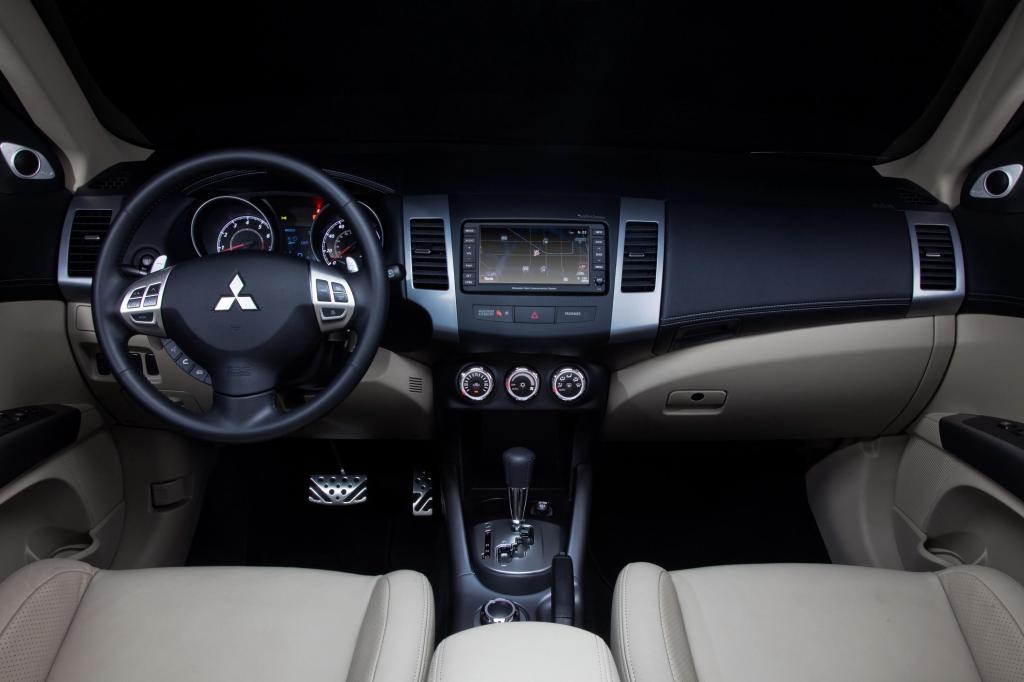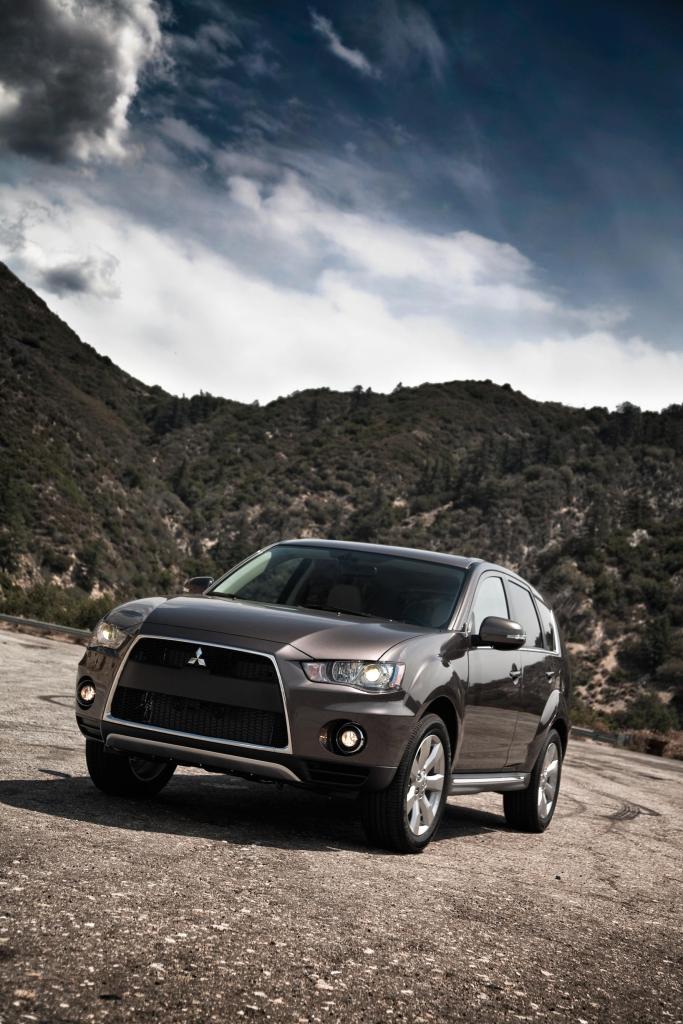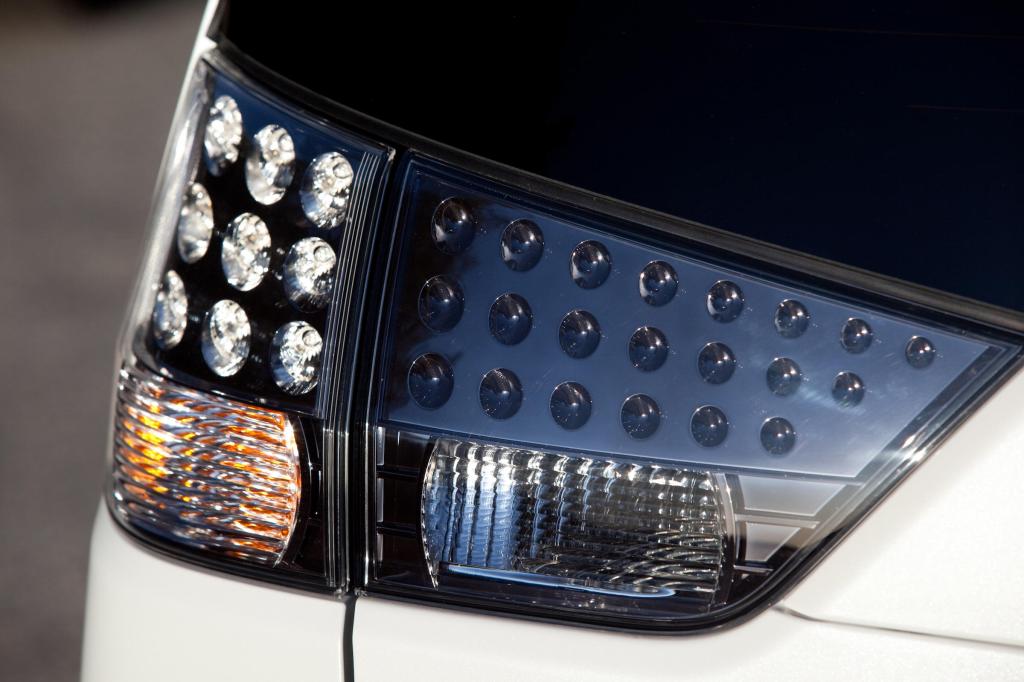Ask a half-dozen people to name a half-dozen compact crossovers and Mitsubishi’s Outlander may not be cited even once.
For one thing, there are nearly two dozen compact crossovers on the market, and heavy hitters such as Honda, Toyota and even Nissan each have at least a couple of different models in the class.
And then there’s the simple fact that when it comes to household names, Mitsubishi ranks right up there with Calvin Coolidge.
Automakers yearn for name recognition the way politicians crave the spotlight. But sometimes a manufacturer can take advantage of being in the shadows. Automakers don’t like to tinker much with models that sell well year-in and year-out. And like an incumbent politician, they’re almost never going to do anything remotely radical.
A company such as Mitsubishi, on the other hand, can afford to do things differently. Mitsubishi is only the sixth-largest automaker in its own domestic market, Japan, and a much smaller player in the U.S. There’s not much risk in taking chances with models such as the Outlander, which reached just over 10,000 sales during 2009.
Despite its relative anonymity, Mitsubishi has produced some groundbreaking models since it began selling its own branded vehicles in the U.S. 28 years ago. (Some of its vehicles were sold as Dodge or Plymouth models from 1971.)
The late-1980s all-wheel drive Galant VR-4 midsize sedan, the 1990 Eclipse (also sold as a Plymouth Laser), and the 1991 3000GT come immediately to mind.
All three were innovative, game-changing and critically acclaimed vehicles.
The 2010 Mitsubishi Outlander GT that I recently tested is unlikely to garner the same degree of critical acclaim. Nor does it quite achieve the standards of innovation set by those forebears.
Yet the Outlander GT nevertheless stands out in several ways in a crowded class of compact crossovers.
One of its standout features is its styling. The Outlander, which has been around in its current form since 2006, is offered in four different trim levels, and all of them received a noticeable facelift for 2010.
The styling changes include a tweaking of the rear quarter panels and rear bumper as well as an almost entirely new front end. The GT model I tested is distinguished from the others with a distinctive grille that reminded me of a Great White shark with its jaws stretched wide enough to swallow a baby whale.
I loved the look, and it seemed to attract attention during my week with the Outlander. I also liked the look at the other end, where chrome trim and clear lenses give the GT’s prominent taillights a custom look.
Changes inside may be even more significant because earlier Outlander models drew some criticism for the fit and finish of their interiors. The Outlander GT’s interior, however, deserves praise rather than derision.
The leather-covered seats on my test car, for example, were ergonomically and aesthetically appealing. Their raised stitching was attractive, and the front buckets did a good job of keeping me comfortable during a pair of six-hour drives and planted during several spirited romps on winding back roads.
I also liked the V-shaped styling of the instrument panel, which placed all of the major controls within easy reach and accented the black dashboard and trim with attractive aluminum-look accents. The instrumentation was large and legible, and the controls and switchgear easy to operate.
In general, the interior conveys the sense that Mitsubishi tried to do things right, rather than inexpensively. I could quibble with the Outlander’s third-row seat (standard on the GT, optional on other Outlanders), which is suitable mostly for Lilliputians and severely limits rear sight lines and cargo space when it’s upright.
On the other hand, most compact crossovers don’t even offer seven-passenger seating capacity.
None offer an all-wheel drive system as technically advanced on paper as the Outlander GT’s. Adopted from Mitsubishi’s renowned road rally-race cars, this S-AWC (Super All Wheel Control) system is designed to provide maximum traction under a wide range of driving conditions by working in tandem with the Outlander’s stability and traction control systems. It is intended to automatically and instantaneously transfer power to any wheel by sensing not only wheelspin, but also yaw and weight balance shifts.
Lacking a scientific way to evaluate the system, I relied on the seat of my pants to tell me how well it worked. I didn’t have a chance to test the S-AWC on snow, but I can report that I’ve never driven a more sure-footed vehicle than the Outlander GT in a torrential downpour.
Only once during several hours driving in those conditions did I notice any lack of traction, and that was when I encountered several inches of standing water on the highway that might have caused many other vehicles to hydroplane out of control.
I also was impressed with the two other major components of the Outlander GT’s powertrain: Its 3.0-liter V-6 engine and six-speed automatic transmission.
The latter changes gears smoothly and quickly on its own, but adds manual override through steering-wheel mounted paddle shifters for drivers who want a bit more control.
The engine is a carryover from 2009, but gains horsepower and torque thanks to re-tuning. It is one of the more potent power plants in its class, delivering brisk off-the-line acceleration and ample thrust for passing on the highway. It’s also smooth and quiet and delivered around 22 miles per gallon during my interstate excursions in the Outlander GT.
The Outlander was comfortable and relatively quiet on the interstate and fun to drive around town. It seemed more enthusiastic than most competitors about taking on twisting back roads, perhaps a tribute to Mitsubishi’s road rally heritage.
Despite its virtues, I wonder how many consumers will be willing to pay more than $30,000 for the Outlander GT. Not necessarily because it isn’t worth that, but because most buyers in that price range are shopping midsize crossovers bearing the most popular brand names.
Scott Wasser is executive editor of MaineToday Media. He writes a weekly auto column for the Sunday Telegram and other newspapers. He can be reached at
swasser@pressherald.com.
Copy the Story Link
Send questions/comments to the editors.





Success. Please wait for the page to reload. If the page does not reload within 5 seconds, please refresh the page.
Enter your email and password to access comments.
Hi, to comment on stories you must . This profile is in addition to your subscription and website login.
Already have a commenting profile? .
Invalid username/password.
Please check your email to confirm and complete your registration.
Only subscribers are eligible to post comments. Please subscribe or login first for digital access. Here’s why.
Use the form below to reset your password. When you've submitted your account email, we will send an email with a reset code.